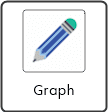GRAPH 2D/PDM/BOM
Women Graduates are trained with basics in Industry application from basic science Mathematics, Physics, Chemistry
Training in application Software by Industry Professional, to train others with preparation as TRAINER to empower.
Empowering areas are ACADEMIC SERVICE-ENTREPRENEURSHIP-DESIGN SERVICE-INDUSTRIES-SOCIAL ENGINEERING
AIM of this training is to get employment directly or indirectly from Industries, Government organization either state or central bodies. Also to develop or support rural industries & other application industries either as induvial or self group
APM GRAPH Flat drawing editor
Features of APM Graph
APM Graph is designed for:
- creating and editing projection drawings of objects using the usual set of primitives typical for flat graphics;
- drawing kinematic, dynamic, hydraulic, electrical and other diagrams and drawings, drawing up settlement and explanatory notes, as well as performing auxiliary procedures;
- preparation of drawing documentation in accordance with the requirements of ESKD and its subsequent storage, viewing and editing;
- parametric representation of a graphical object, which makes it easy to obtain graphically similar objects without the operation of re-drawing;
- importing information from other graphic editors and exporting the resulting drawings to other graphic environments (via DXF format);
- exchange of information with databases (machine-building, construction and technological), which are an integral part of the software products of the STC APM company;
- exchange of graphical information with the calculation modules of the APM WinMachine and APM Civil Engineering systems, i.e. as a preprocessor for preparing geometric initial data before performing the calculation and a postprocessor for displaying the results;
- calculation of dimensional chains.
APM Graph offers users:
- user-friendly interface that speeds up the preparation of design and technological documentation with the best combination of price and quality;
- various ways of constructing graphic primitives (orthogonal drawing, various kinds of bindings, the use of auxiliary lines, etc.);
- the use of various types of lines, hatching, letters, etc.;
- affordable and effective means for designing tables;
- convenient tools for setting linear and angular dimensions, setting technical requirements, special characters and a number of symbols;
- setting tolerances and landings by selecting them from the database;
- built-in functions for calculating linear and angular dimensional chains by the method of limit tolerances and the probabilistic method;
- visual and intuitive tools for creating parametric objects, parts and assemblies for the purpose of their repeated use in the future; the resulting geometric objects can be stored not only in the form of files, but also in databases created by the user himself;
- the ability to use analytical relationships and logical operations between geometric dimensions when creating parametric models.
Features of APM Graph
APM Graph is designed for:
- creating and editing projection drawings of objects using the usual set of primitives typical for flat graphics;
- drawing kinematic, dynamic, hydraulic, electrical and other diagrams and drawings, drawing up settlement and explanatory notes, as well as performing auxiliary procedures;
- preparation of drawing documentation in accordance with the requirements of ESKD and its subsequent storage, viewing and editing;
- parametric representation of a graphical object, which makes it easy to obtain graphically similar objects without the operation of re-drawing;
- importing information from other graphic editors and exporting the resulting drawings to other graphic environments (via DXF format);
- exchange of information with databases (machine-building, construction and technological), which are an integral part of the software products of the STC APM company;
- exchange of graphical information with the calculation modules of the APM WinMachine and APM Civil Engineering systems, i.e. as a preprocessor for preparing geometric initial data before performing the calculation and a postprocessor for displaying the results;
- calculation of dimensional chains.
APM Graph offers users:
- user-friendly interface that speeds up the preparation of design and technological documentation with the best combination of price and quality;
- various ways of constructing graphic primitives (orthogonal drawing, various kinds of bindings, the use of auxiliary lines, etc.);
- the use of various types of lines, hatching, letters, etc.;
- affordable and effective means for designing tables;
- convenient tools for setting linear and angular dimensions, setting technical requirements, special characters and a number of symbols;
- setting tolerances and landings by selecting them from the database;
- built-in functions for calculating linear and angular dimensional chains by the method of limit tolerances and the probabilistic method;
- visual and intuitive tools for creating parametric objects, parts and assemblies for the purpose of their repeated use in the future; the resulting geometric objects can be stored not only in the form of files, but also in databases created by the user himself;
- the ability to use analytical relationships and logical operations between geometric dimensions when creating parametric models.

